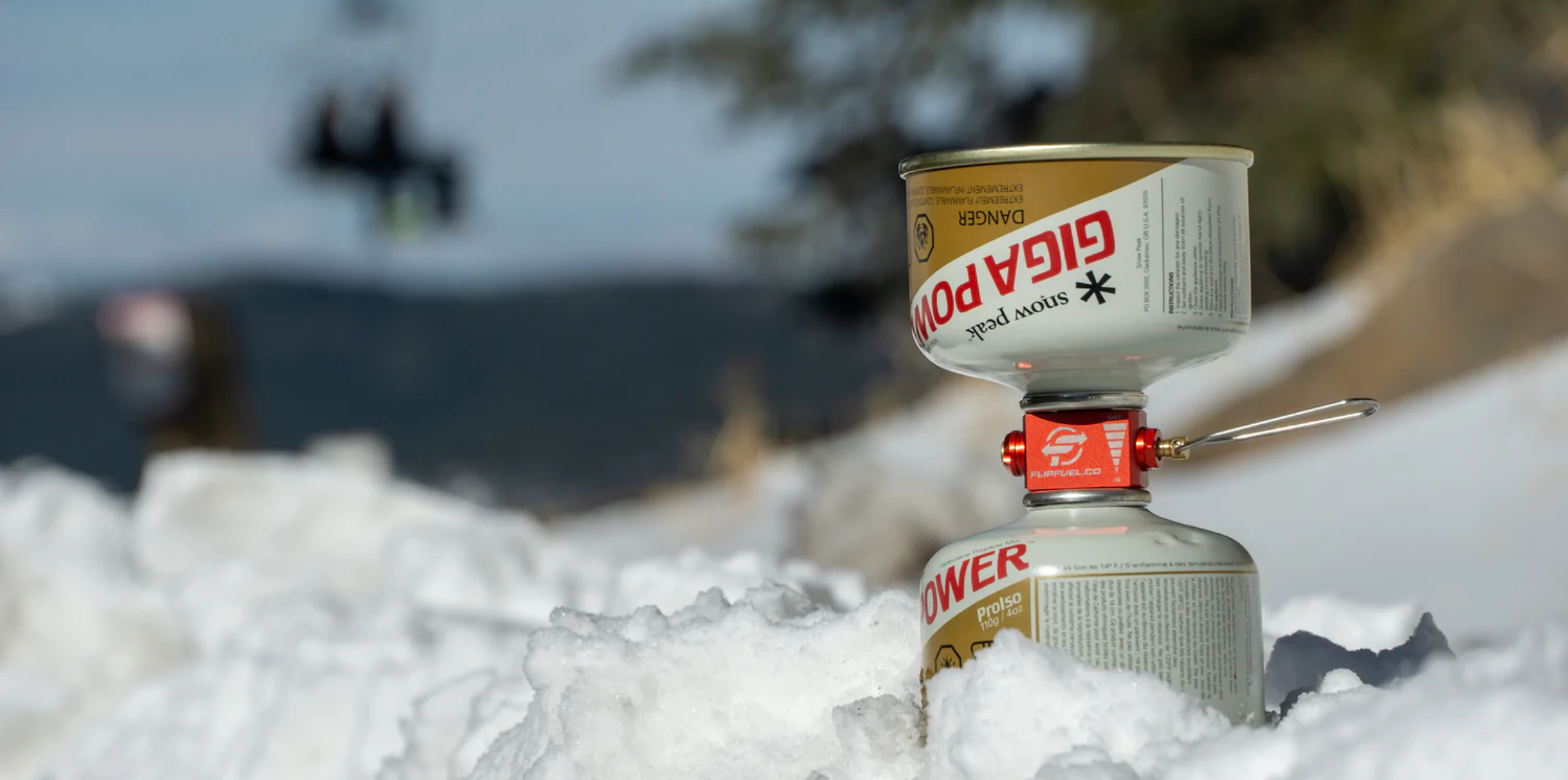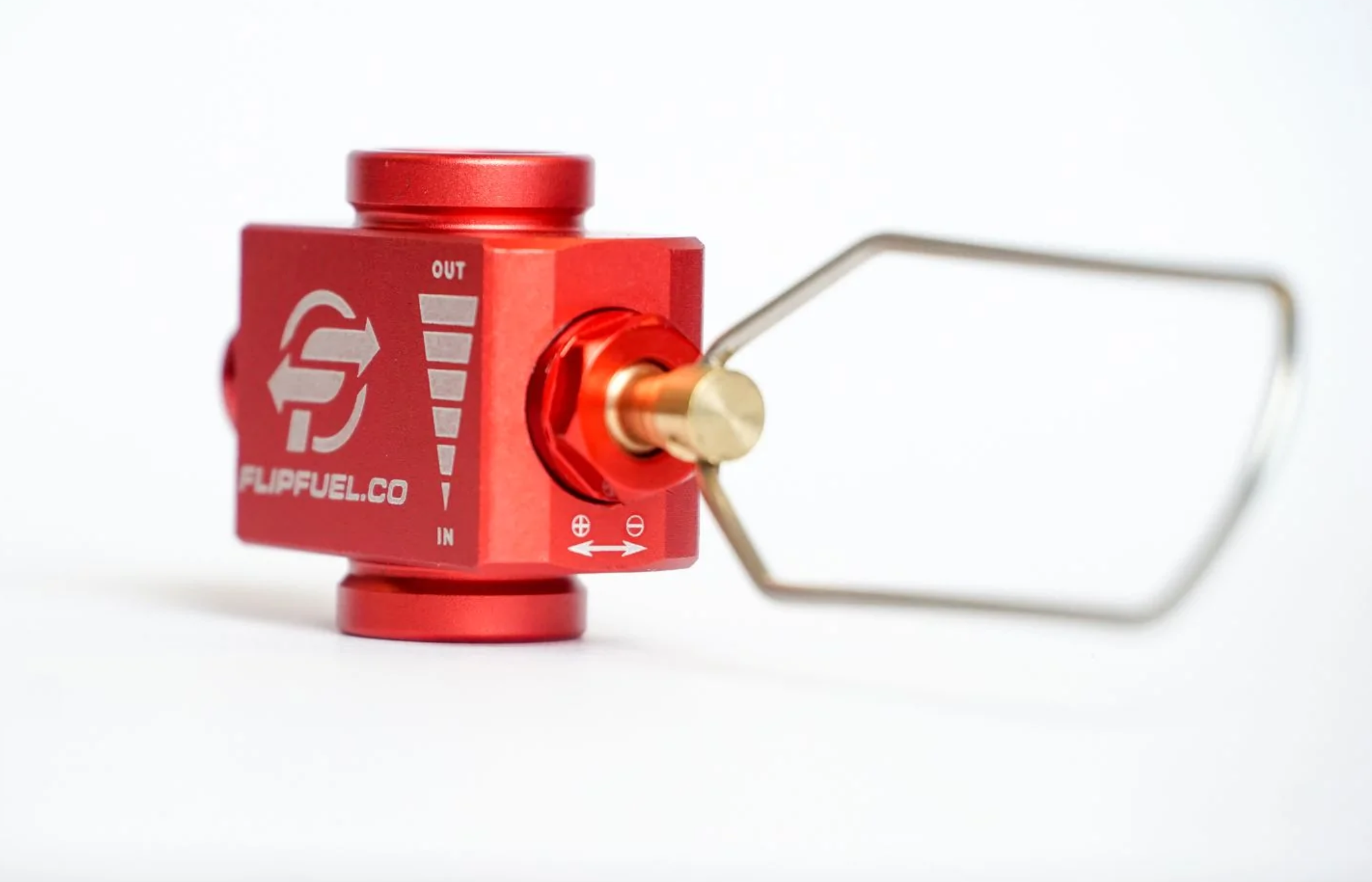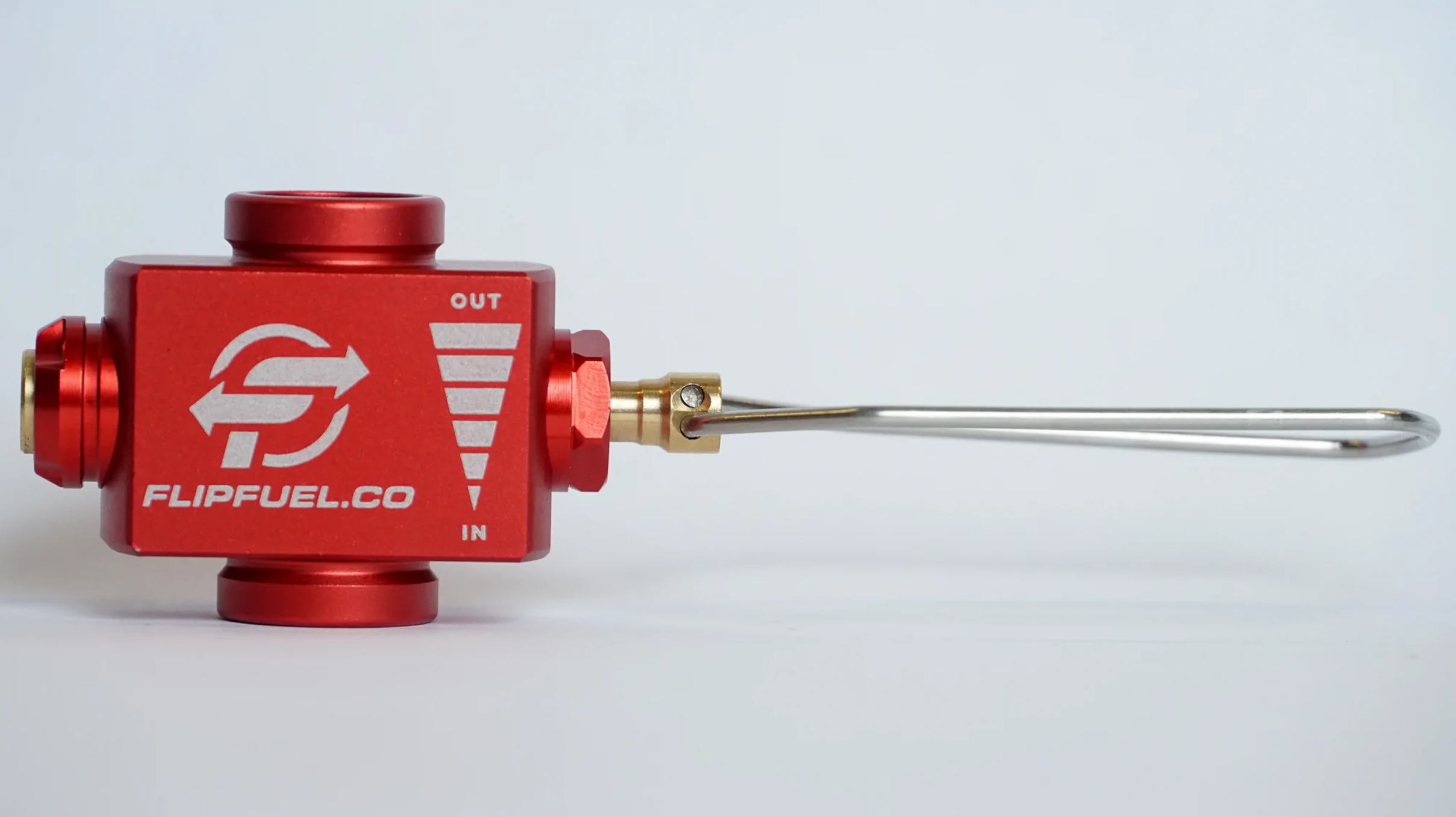
FLipfuel
This Clever Little Device Transfers Fuel from One Canister to Another, Solving One of Camping’s Common Conundrums
Anyone who has done any decent amount of camping or multi-day trekking or climbing is about to start nodding their head, because all of us who spend many of our days out in the field know this problem well: it’s the multiple cans of half-spent camp stove fuel problem.
It goes like this: you buy a nice, full can of fuel for your camp stove, you go out and enjoy a camping trip or a multi-day mountain ascent or a paddling adventure or whatnot, you come home, you unpack, and you get on with life. Then, a few weeks later (you plan the next outing). In the course of that planning, you give your stove’s fuel canister a shake and wonder: “Hmm, how much fuel do I need for backpacking or camping or whatnot?” Then you tell yourself probably more than you have, and you procure another full canister.
At the end of that trip, you’ll have two partially-full cans of fuel. Do you bring both on the next outing? Risk it with the one that seems heavier? Or… buy a third?
Without admitting how many half-empty (or half-full, because optimism) cans of camping fuel we had in our house before finding this fix (coughcough it was FIVE cough) we’ll just make it clear this was a pain point of camping and trekking and climbs we know well. But it’s in the past now thanks to a piece of hardware about the size of a car’s key fob.
That piece of hardware is the FlipFuel Fuel Transfer Device, a product so elegantly simple and highly effective that you will wonder how you lived without it before. (Then you’ll remember: “Oh, right, I just kept buying more cans of camp fuel and slowly filling that shelf in the garage with half spent ones.”)
The FlipFuel works with most isobutane camping stove fuel canisters — like the Giga Power fuel cans from Snow Peak that you’ve surely seen screwed beneath a LiteMax camp stove — and it works simply by connecting two canisters together via the device then turning a handle to simultaneously open their valves and transfer fuel from one can to the other.
The only thing to note is that the can from which you want to drain fuel needs to be warm, while the can to be filled needs to be chilled. If you’re out in winter or summer, this is easy, as it will be easy to create heat differentiation using nothing more than the ambient conditions and some shade or snow and the temperature in your tent or even inside your jacket. In milder conditions, you can jam the can to be filled into your cooler and find a sunny patch for the one to be emptied, as only a minor temperature difference is really needed. Just… don’t warm fuel cans by the fire, OK?
Once the canisters are respectively warmed and cooled and connected via the FlipFuel Transfer Device, it takes mere seconds to drain that warm canister and turn the cool one into a fresh, full tank of gas, as it were.
Now, if you’re wondering how to safely dispose of empty camping fuel canisters, as you’ll surely have some empty camp fuel cans soon, that’s another story. But don’t worry, it’s a story we wrote that you can read right here!
Photos c/o Flipfuel




